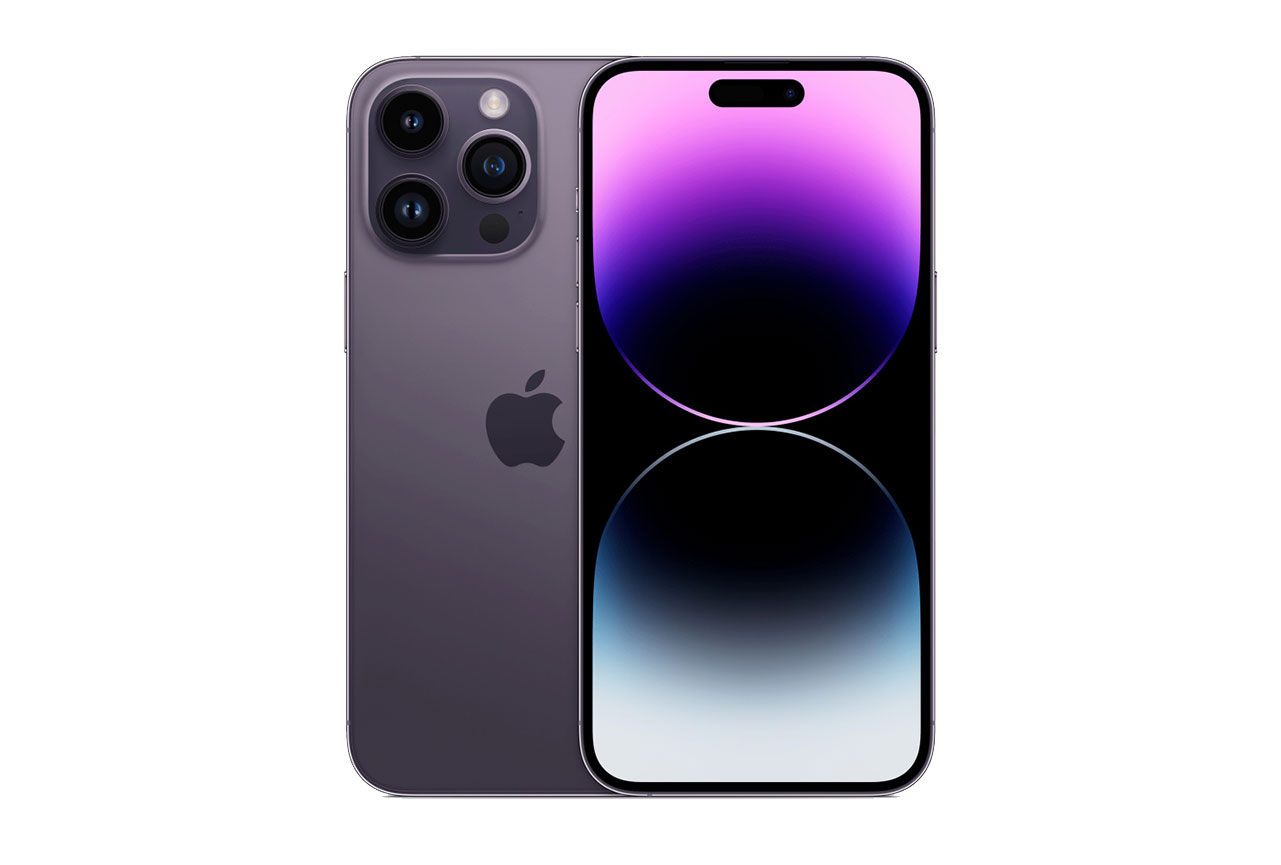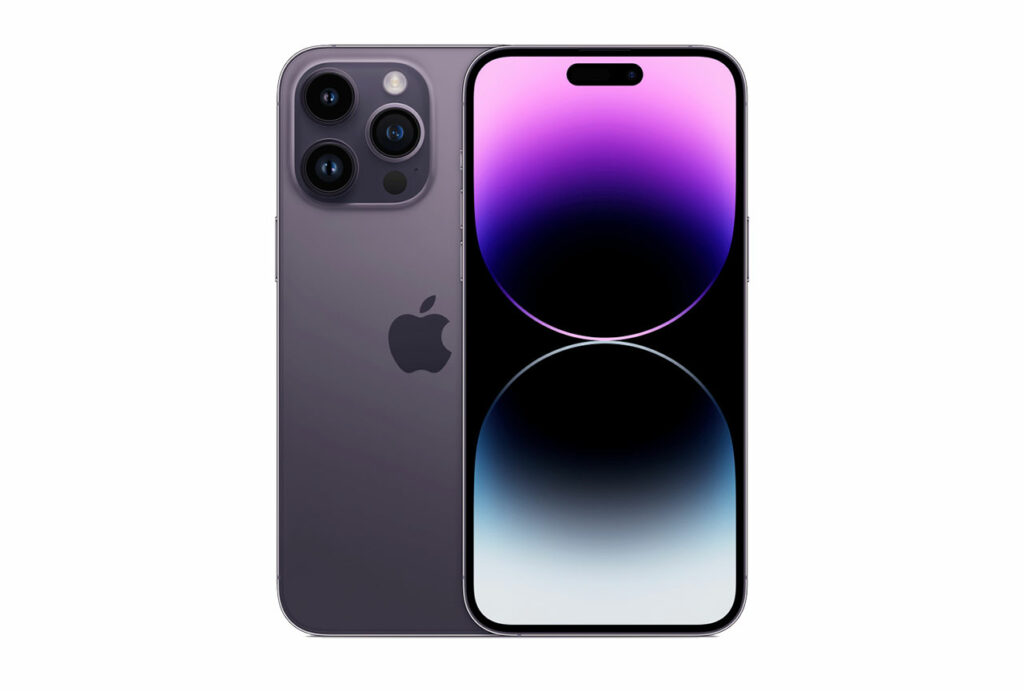The Apple iPhone 14 Pro Max and iPhone 14 Pro share the same rear camera specs, as well the same A16 Bionic processor, so as expected, the results of the Apple iPhone 14 Pro Max camera are exactly the same as those of the iPhone14 Pro.
We’ve included a few examples from our testing to show the similarities between these two models. But for a more in-depth look at the iPhone 14 Pro Max’s rear camera photo and video performance, we direct you to the full test results of the iPhone 14 Pro.
Overview
Key camera specifications:
- Primary: 48MP sensor, 24 mm equivalent f/1.78 -aperture lens, second generation sensor-shift OIS, Dual Pixel AF
- Ultra-wide: 12MP sensor, 13mm equivalent f/2.2-aperture lens, Dual Pixel AF
- Tele: 12MP sensor, 77 mm equivalent f/2.8-aperture lens, OIS
- HDR video recording with Dolby Vision
- A16 Bionic chipset
Scoring
Sub-scores and attributes included in the calculations of the global score.
 Apple iPhone 14 Pro Max
Apple iPhone 14 Pro Max

146
camera
111
Huawei Pura 70 Ultra
Best: Huawei Pura 70 Ultra (130)
119
Apple iPhone 16 Pro
Best: Apple iPhone 16 Pro (130)
112
Huawei Pura 70 Ultra
Best: Huawei Pura 70 Ultra (125)
111
Xiaomi 15 Ultra
Best: Xiaomi 15 Ultra (125)
87
Huawei Pura 70 Ultra
Best: Huawei Pura 70 Ultra (117)
72
Xiaomi Redmi 12 5G
Best: Xiaomi Redmi 12 5G (82)
80
Huawei Pura 70 Ultra
Best: Huawei Pura 70 Ultra (85)
91
Apple iPhone 16 Pro
Best: Apple iPhone 16 Pro (93)
103
Xiaomi 15 Ultra
Best: Xiaomi 15 Ultra (128)
100
Huawei Pura 70 Ultra
Best: Huawei Pura 70 Ultra (122)
115
Oppo Find X8 Pro
Best: Oppo Find X8 Pro (116)
117
Oppo Find X8 Pro
Best: Oppo Find X8 Pro (120)
117
Huawei Pura 70 Ultra
Best: Huawei Pura 70 Ultra (120)
113
Oppo Find X6 Pro
Best: Oppo Find X6 Pro (118)
117
Apple iPhone 16 Pro
Best: Apple iPhone 16 Pro (120)
74
Xiaomi 12S Ultra
Best: Xiaomi 12S Ultra (86)
117
Apple iPhone 16 Pro
Best: Apple iPhone 16 Pro (119)
Use cases & Conditions
Use case scores indicate the product performance in specific situations. They are not included in the overall score calculations.
Outdoor
Photos & videos shot in bright light conditions (≥1000 lux)
Indoor
Photos & videos shot in good lighting conditions (≥100lux)
Lowlight
Photos & videos shot in low lighting conditions (<100 lux)
Friends & Family
Portrait and group photo & videos
Position in Global Ranking

26
th
4. Apple iPhone 16 Pro Max
157
10. Apple iPhone 15 Pro Max
154
22. Honor Magic4 Ultimate
147
26. Apple iPhone 14 Pro Max
146
26. Motorola Edge 50 Ultra
146
26. Samsung Galaxy S25 Ultra
146
32. Samsung Galaxy S24 Ultra
144
34. Apple iPhone 13 Pro Max
141
34. Google Pixel 9 Pro Fold
141
38. Samsung Galaxy S23 Ultra
140
43. Tecno Camon 40 Pro 5G
138
45. Vivo X80 Pro (Snapdragon)
137
52. Samsung Galaxy S22 Ultra (Snapdragon)
135
52. Vivo X80 Pro (MediaTek)
135
59. Samsung Galaxy Z Fold6
133
59. Samsung Galaxy S24+ (Exynos)
133
59. Samsung Galaxy S24 FE
133
59. Samsung Galaxy S24 (Exynos)
133
69. Samsung Galaxy Z Flip6
132
70. Apple iPhone 12 Pro Max
131
70. Samsung Galaxy S22 Ultra (Exynos)
131
81. Samsung Galaxy Z Fold5
128
83. Asus Smartphone for Snapdragon Insiders
127
83. Samsung Galaxy Z Flip5
127
83. Samsung Galaxy S23 FE
127
88. Vivo X70 Pro (MediaTek)
126
92. Asus Zenfone 11 Ultra
125
92. Samsung Galaxy S22+ (Exynos)
125
97. Samsung Galaxy Z Fold4
124
100. Apple iPhone 11 Pro Max
122
105. Xiaomi Redmi Note 13 Pro Plus 5G
121
106. Samsung Galaxy Z Fold3 5G
120
106. Samsung Galaxy S22 (Exynos)
120
106. Xiaomi Redmi Note 13 Pro 5G
120
111. Xiaomi Redmi Note 14 Pro+ 5G
118
114. Apple iPhone 12 mini
117
114. Samsung Galaxy S21 Ultra 5G (Snapdragon)
117
114. Samsung Galaxy S21 FE 5G (Snapdragon)
117
114. Samsung Galaxy S21 5G (Snapdragon)
117
120. Vivo X60 Pro 5G (Snapdragon)
116
123. Motorola Edge 50 Neo
115
123. Samsung Galaxy S21+ 5G (Snapdragon)
115
123. Samsung Galaxy S21 Ultra 5G (Exynos)
115
133. Crosscall Stellar-X5
113
133. Xiaomi Redmi Note 12 Pro+ 5G
113
137. Samsung Galaxy Z Flip4
112
139. Samsung Galaxy Z Flip3 5G
111
139. Samsung Galaxy S21+ 5G (Exynos)
111
139. Samsung Galaxy S21 5G (Exynos)
111
144. Samsung Galaxy A55 5G
108
144. Vivo X60 Pro 5G (Exynos)
108
149. Samsung Galaxy A54 5G
107
150. Xiaomi Redmi Note 14 Pro 5G
106
153. Samsung Galaxy A35 5G
104
154. Motorola Edge 40 Neo
103
154. Xiaomi Redmi Note 14 5G
103
156. Xiaomi Redmi Note 12 Pro 5G
102
158. Motorola Edge 30 Pro
101
160. Apple iPhone SE (2022)
100
162. Motorola Moto g75 5G
96
168. Samsung Galaxy A34 5G
92
168. Samsung Galaxy A25 5G
92
172. Xiaomi Redmi Note 13 5G
91
174. Motorola Moto g85 5G
88
174. Samsung Galaxy A52s 5G
88
174. Samsung Galaxy A52 5G
88
178. Motorola moto g54 5G
85
178. Samsung Galaxy A33 5G
85
178. Samsung Galaxy A16 LTE
85
181. Honor Magic6 Lite (5300 mAh)
84
181. Xiaomi Redmi Note 14
84
184. Samsung Galaxy A15 5G
83
186. Samsung Galaxy A15 LTE
81
187. Samsung Galaxy A53 5G
79
189. Xiaomi Redmi Note 11 Pro 5G
78
191. Samsung Galaxy A16 5G
77
193. Motorola Moto G35 5G
75
193. Xiaomi Redmi Note 13
75
196. Honor Magic5 Lite 5G
74
198. Samsung Galaxy A23 5G
70
199. Xiaomi Redmi Note 12 5G
69
202. Motorola moto g34 5G
67
202. Samsung Galaxy A14 5G
67
204. Motorola Moto G62 5G
66
205. Xiaomi Redmi Note 11S 5G
65
207. Xiaomi Redmi Note 12
63
212. Honor Magic4 Lite 5G
61
214. Xiaomi Redmi Note 11
60
216. Crosscall Stellar-M6
59
223. Xiaomi Redmi 10 2022
51
225. Samsung Galaxy A22 5G
48
Position in Ultra-Premium Ranking

23
rd
4. Apple iPhone 16 Pro Max
157
10. Apple iPhone 15 Pro Max
154
20. Honor Magic4 Ultimate
147
23. Apple iPhone 14 Pro Max
146
23. Motorola Edge 50 Ultra
146
23. Samsung Galaxy S25 Ultra
146
28. Samsung Galaxy S24 Ultra
144
30. Apple iPhone 13 Pro Max
141
30. Google Pixel 9 Pro Fold
141
34. Samsung Galaxy S23 Ultra
140
38. Vivo X80 Pro (Snapdragon)
137
43. Samsung Galaxy S22 Ultra (Snapdragon)
135
43. Vivo X80 Pro (MediaTek)
135
48. Samsung Galaxy Z Fold6
133
48. Samsung Galaxy S24+ (Exynos)
133
53. Samsung Galaxy Z Flip6
132
54. Apple iPhone 12 Pro Max
131
54. Samsung Galaxy S22 Ultra (Exynos)
131
61. Samsung Galaxy Z Fold5
128
63. Asus Smartphone for Snapdragon Insiders
127
63. Samsung Galaxy Z Flip5
127
68. Asus Zenfone 11 Ultra
125
68. Samsung Galaxy S22+ (Exynos)
125
71. Samsung Galaxy Z Fold4
124
73. Apple iPhone 11 Pro Max
122
76. Samsung Galaxy Z Fold3 5G
120
81. Samsung Galaxy S21 Ultra 5G (Snapdragon)
117
83. Samsung Galaxy S21+ 5G (Snapdragon)
115
83. Samsung Galaxy S21 Ultra 5G (Exynos)
115
89. Samsung Galaxy Z Flip4
112
90. Samsung Galaxy Z Flip3 5G
111
90. Samsung Galaxy S21+ 5G (Exynos)
111
Pros
- Pleasant and vivid color in photo and video, accurate skin tones
- Wide dynamic range in photo and video, excellent contrast
- High level of detail in photo and video
- Excellent autofocus for photo and video
- Pleasant simulated bokeh effect with very good details on faces
- High-quality continuous photo and video zoom at close and medium range
- Excellent video stabilization
Photo
143
Huawei Pura 70 Ultra
Huawei Pura 70 Ultra
Autofocus irregularity and speed: 20Lux Δ0EV Tungsten Handheld
This graph illustrates focus accuracy and speed and also zero shutter lag capability by showing the edge acutance versus the shooting time measured on the AFHDR setup on a series of pictures. All pictures were taken at 20Lux with Tungsten illuminant, 500ms after the defocus. The edge acutance is measured on the four edges of the Dead Leaves chart, and the shooting time is measured on the LED Universal Timer.
DXOMARK CHART (DMC) detail preservation score vs lux levels for tripod and handheld conditions
This graph shows the evolution of the DMC detail preservation score with the level of lux, for two holding conditions. DMC detail preservation score is derived from an AI-based metric trained to evaluate texture and details rendering on a selection of crops of our DXOMARK chart.
Zoom
139
Xiaomi 15 Ultra
Xiaomi 15 Ultra
DXOMARK CHART (DMC) detail preservation score per focal length
This graph shows the evolution of the DMC detail preservation score with respect to the full-frame equivalent focal length for different light conditions. The x-axis represents the equivalent focal length measured for each corresponding shooting distance and the y-axis represents the maximum details preservation metric score: higher value means better quality. Large dots correspond to zoom ratio available in the user interface of the camera application.
DXOMARK CHART (DMC) detail preservation score per focal length
This graph shows the evolution of the DMC detail preservation score with respect to the full-frame equivalent focal length for different light conditions. The x-axis represents the equivalent focal length measured for each corresponding shooting distance and the y-axis represents the maximum details preservation metric score: higher value means better quality. Large dots correspond to zoom ratio available in the user interface of the camera application.
DXOMARK CHART (DMC) detail preservation score per focal length
This graph shows the evolution of the DMC detail preservation score with respect to the full-frame equivalent focal length for different light conditions. The x-axis represents the equivalent focal length measured for each corresponding shooting distance and the y-axis represents the maximum details preservation metric score: higher value means better quality. Large dots correspond to zoom ratio available in the user interface of the camera application.
DXOMARK CHART (DMC) detail preservation score per focal length
This graph shows the evolution of the DMC detail preservation score with respect to the full-frame equivalent focal length for different light conditions. The x-axis represents the equivalent focal length measured for each corresponding shooting distance and the y-axis represents the maximum details preservation metric score: higher value means better quality. Large dots correspond to zoom ratio available in the user interface of the camera application.
Video
149
Apple iPhone 16 Pro
Apple iPhone 16 Pro
DXOMARK CHART (DMC) detail preservation video score vs lux levels
This graph shows the evolution of the DMC detail preservation video score with the level of lux in video. DMC detail preservation score is derived from an AI-based metric trained to evaluate texture and details rendering on a selection of crops of our DXOMARK chart.



 26th
26th 23rd
23rd




DXOMARK encourages its readers to share comments on the articles. To read or post comments, Disqus cookies are required. Change your Cookies Preferences and read more about our Comment Policy.